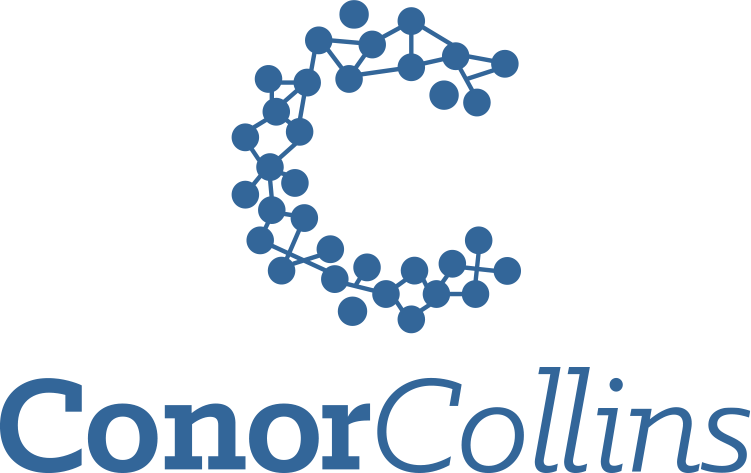This week’s guest blog is from Christin Sadler
___________________________________________________________________________________________
Facts matter, especially when it comes to health and health care. The field of allied health, which includes the profession of massage therapy, is rife with myths and misinformation. Regardless of whether the myths are perpetuated by patients or practitioners, correcting and combating myths with facts is one of our responsibilities as healthcare professionals. A persistent myth heard frequently in our field is that massage therapy “flushes toxins” from muscles, and drinking water after a massage is essential to help the body “detoxify”. The goal of this article is to debunk this statement and present some facts and resources to be shared in its place.
Let’s begin with toxins. Typically, a toxin is defined as a poisonous substance that causes disease. Importantly, humans do not make toxins. We don’t have venom like some reptiles, and we don’t produce poisonous spores like some plants or bacteria, so it’s very unlikely for any toxins to be present in our systems. On the rare occasion that toxins are introduced from an external source (e.g., snake bite, sepsis, or botulism), this is usually a medical emergency with the patient presenting to an emergency room and not a massage therapy clinic. So, if most medical professionals don’t use the word “toxin” to describe anything in the human body, where did this phrase come from? The long answer involves a deep dive into various marketing and media strategies of the “Big Wellness” industry, but the short answer is that “toxins” (and other fad “wellness” terms) are used to scare us into buying products (Gunter, 2018).
Importantly, our bodies do not require external support to “cleanse” or “detoxify”. If an individual has a functional heart, liver, a set of lungs, and a pair of kidneys, then they have everything they need to breakdown most injected substances that may harm cells (e.g., alcohol). The idea of metabolic by-products and/or cellular waste being “toxic” has been debunked. For example, lactate, often called lactic acid, did have a “toxin” label based on some early work on cellular metabolism by Hill and Meyerhof in the 1920s. Based on methods and technologies used at the time, the researchers suggested lactate was “a waste by-product” of carbohydrate metabolism in skeletal muscle and potentially “toxic to cells” (Coggan & Costill, 2022). This idea held strong for decades, perpetuated in textbooks and other scientific works. However, since the 1980s, research in the fields of human physiology, exercise science, pathology, and immunology have all provided an overwhelming amount of evidence against the idea of lactate being toxic but instead a useful and essential product created by muscle cells to cope with metabolic stresses. In other words, lactate is a fuel source created for and used by working cells, such as skeletal muscle cells, cardiac muscle cells, and neurons (Brooks, 2018; Coggan & Costill, 2022; Gladden, 2004).
How do cells use lactate as a fuel source? The short answer to this question is with “a lactate shuttle” system, which is the term used to describe the complex feedback loops triggered and used by lactate to support our working cells. Basically, a “producer” cell forms and secretes lactate for a “consumer” cell to use as an immediate fuel source.
For example, during exercise, “fast twitch” muscle cells convert glycogen and glucose into lactate and excrete locally for nearby “slow twitch” muscle cells to use to produce more of our body’s energy molecule: adenosine triphosphate (ATP) (Brooks, 2018). As such, high lactate levels seen in the blood during exercise, or even illness or after injury (e.g., severe head trauma) are no longer viewed as a problem to get rid of, but instead an indicator the body is attempting to fuel muscle and/or carry out cellular repair and adaptation processes (Brooks et al., 2022; Gladden, 2004).
As myths in massage therapy go, the old idea of lactate being toxic and harmful to muscle cells may occasionally present in practice. Importantly, there is very little evidence that massage “removes” lactate from muscles, much like massage cannot remove nutrients from our intestines or gases from our blood. Indeed, there is very little evidence to suggest that manual therapy techniques increase circulation at all. Any local hyperemia and heat found in a massaged area have been attributed to the external application of force (the therapist’s hands) producing mechanical stress on skin and subdermal tissues resulting in brief vasodilation and an increase in temperature; however, no changes in circulation or temperature have been measured below a depth of 2.5 cm or in other areas of the body (Couturier et al., 2013; Weerapong et al., 2005). There is some evidence that slow rhythmic movements can increase local venous return, especially when 5-10 seconds are left in between strokes (e.g., manual lymphatic drainage techniques) (Couturier et al., 2013; Weerapong et al., 2005); however, much more research is required to understand how massage interacts with the nervous, cardiovascular, and endocrine systems.
Let’s move on to the second part of the myth: drinking water after a massage is “essential to flush toxins”. If we review our discussion so far, humans don’t have toxins and massage doesn’t increase circulation… so should we drink water? Water is an essential nutrient and must be ingested (but not because of a massage, but because our body requires it). The National Academy of Medicine, an independent, evidence-based scientific advisory organization in the United States, suggests the adequate intake of daily fluids is about 13 cups for healthy adult men and 9 cups for healthy adult women, respectively (with 1 cup equaling ~240 mL). Higher amounts are required for when physically active, breastfeeding, working/ living in warm climates, and/or having a larger body size (Harvard T.H. Chan, 2023). About 20% of our total water intake comes from the foods we eat (e.g., fruits and vegetables, soups, etc.), so it is not incorrect to ask patients to reflect on their water intake. However, there is no evidence that drinking water after a massage will assist, amplify, or cause any additional effects induced by applied techniques (other than a placebo effect). Thirst following a prone or supine massage therapy treatment (or a nap) may be due to our body attempting to correct for lower-than-normal blood pressure, or not enough water intake during the day; however, it’s difficult to know for sure without measuring and monitoring many different physiological variables before, during, and after a treatment.
So: if water is useful, then what is the harm in perpetuating the myth? The harm is in the misinformation. According to a report from Research and Markets (as reported in The Washington Post), the global market for products that are developed as “health” or “wellness” supplements or tools in response to myths (including products like detox herbs, pills, teas, juice cleanses, etc.) is projected to reach approximately 75 billion dollars by 2026 (Rosenbloom, 2022). Detox products use health disinformation tactics, defined as the sharing of inaccurate or incomplete information, to score massive profits. In other words, even though there is much evidence that there is absolutely nothing magical about drinking lemon & cayenne pepper, or cucumber-infused water, or only juice for 7 days, companies rely on our misunderstanding of physiology, and our emotional responses to their marketing and advertising to trick us into thinking there’s something wrong with our bodies. These companies feed off misinformation and myths to sell products that provide a false sense of control over our health, illness, or age.
Managing myths in massage therapy
One of the reasons myths perpetuate is because science has a massive communication problem. Peer-reviewed articles generally discuss ultra-specific experiments or review dense topics using complex terminology and are hidden behind expensive paywalls. In addition, blog posts and podcasts, written or hosted by literally anyone, discuss anecdotal experiences or biased personal interpretations of scientific work in easily accessible and widely sharable mediums. Furthermore, marketing teams convince us we need a specific product to be healthy. Regardless of whether the intent is to create confusion, cause mistrust of health professionals, promote a specific product, or to share anecdotal experiences or personal views on a topic, misinformation and disinformation can prevent our patients from accessing the health care they may really need.
So, how do we combat myths and misinformation in massage therapy? Always critically consider the source of information, especially when reading or listening to any resource touting “health or wellness advice”. When a podcast host or blog post author discusses “a study”, search the article to confirm the information discussed by the host is both real, accurate, and supported by additional work. Importantly, one study cannot be used as absolute evidence for an effect; science doesn’t work this way. Consider each scientific article as one brick in a brick house of a community of brick houses: the data presented in the article may provide some evidence in support or against a specific hypothesis, but rarely “proves” or “disproves” anything; instead, multiple articles (multiple “bricks”) are required to build a wall, and so many more are required to build a multi-room house. If we consider the field of health sciences as an entire city of gigantic brick houses, one can quickly see how many peer-reviewed articles or other vetted resources must be written/read to accurately understand a hypothesis. To supplement, there are lots of great books and podcasts written by or hosted by scientists dedicated to knowledge translation and combating misinformation, so seek these out (and always search up any biases, endorsements, or other ways the author(s) may profit from pushing a specific product or (mis)information.)
It’s easy to fall for myths because we typically all want the same thing: to live our healthiest lives. Considering the very low amount of health education the average person receives in their school years, one of the best things we can do for our patients is help them learn a little bit about how the body works, which includes leaning into discussions containing health myths. And as New Year Resolutions begin, recommend prioritizing sleep and exercise (resource: CSEP’s “24-Hour Movement Guidelines”), and nutrition and hydration (resource: Canada’s Food Guide) to any patient interested in evidence-based behaviours for optimal health.
References
Brooks, G. A. (2018). The Science and Translation of Lactate Shuttle Theory. Cell Metabolism, 27(4), 757–785. https://doi.org/10.1016/j.cmet.2018.03.008
Brooks, G. A., Arevalo, J. A., Osmond, A. D., Leija, R. G., Curl, C. C., & Tovar, A. P. (2022). Lactate in contemporary biology: A phoenix risen. The Journal of Physiology, 600(5), 1229–1251. https://doi.org/10.1113/JP280955
Coggan, A. R., & Costill, D. L. (2022). A Brief History of Exercise Metabolism. In G. McConell (Ed.), Exercise Metabolism (pp. 1–18). Springer International Publishing. https://doi.org/10.1007/978-3-030-94305-9_
Couturier, A., Le Meur, Y., Huiban, C., Saunier, M., & Férey, F.-X. (2013). Massage and Physiotherapy. In Recovery for Performance in Sport (pp. 111–134). Human Kinetics.
Gladden, L. B. (2004). Lactate metabolism: A new paradigm for the third millennium. The Journal of Physiology, 558(1), 5–30. https://doi.org/10.1113/jphysiol.2003.058701
Gunter, J. (2018, August 1). Worshiping the False Idols of Wellness. The New York Times. https://www.nytimes.com/2018/08/01/style/wellness-industrial-complex.html
Harvard T.H. Chan. (2023). Water. The Nutrition Source, School of Public Health. https://www.hsph.harvard.edu/nutritionsource/water/
Rosenbloom, C. (2022, January 11). No, you don’t need a detox juice cleanse. Here’s why. The Washington Post. https://www.washingtonpost.com/wellness/2022/01/11/are-detox-juice-cleanses-necessary/
Weerapong, P., Hume, P. A., & Kolt, G. S. (2005). The Mechanisms of Massage and Effects on Performance, Muscle Recovery and Injury Prevention. Sports Medicine, 35(3), 235–256. https://doi.org/10.2165/00007256-200535030-00004
Wilson, C. (2021, February 25). The placebo effect. NewScientist. https://www.newscientist.com/definition/placebo-effect/



Recent Comments